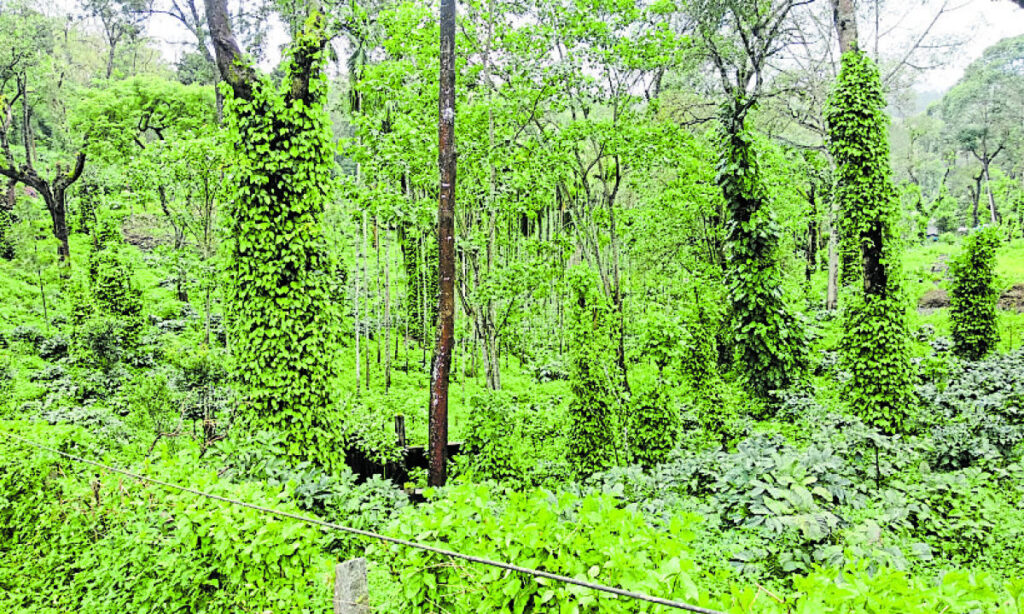
Nestled in the many hills of Kodagu, Hassan and Chikkamagaluru are countless coffee estates. The vast green estates betray the problems that coffee growers now face due to an acute labour shortage and climate change. These estates, once profitable, have been affected by unpredictable rains.
The 2018 landslide, a climate calamity in the region, washed away Savita’s 10-acre estate in Thanthipala, Madikeri. Four years later, many disasters followed suit. “I did not want to come back to this village, I was scared,” she says.
Kodagu is the largest coffee-producing district in the country with a total of 22,320 growers and 2,20,430 hectares of plantation land. The growers of the globally sought-after Monsoon Malabar beans are faced with new challenges, including a hard blow by landslides four years ago.
Landslides affected 2,095 hectares of land in Madikeri and Somwarpet. Of this, 959 hectares were plantation land.
Reminders of these landslides are plain to see in the areas of Thanthipala, Mukkodlu, Hattihole, Madapura, Hebbettageri and Monnageri.
For the plantation owners who lost land, there has been little relief, explains Nanda Belliappa, Vice-Chairman, Codagu Planters Association (CPA). “Apart from National Disaster Relief Fund relief, which is meagre, growers have not received any aid. Many areas have yet to be brought to condition. Land preparation has to be done,” he says.
Although Savita received compensation for her damaged house, it did not extend to estate loss. “I make a livelihood from the five acres of land that survived the disaster in 2018,” she says.
The once pristine greenery and ecosystems in these areas have been altered forever. In this place stands fissured land, devoid of trees, as a testament to government apathy.
Coupled with the rising cost of production, the plantation growers are constantly challenged by changing climate, lack of skilled labour, elephant-human conflicts and gaps in policy and reforms.
Plantation growers also point out the lower productivity of coffee varieties in India when compared to other coffee-producing countries. This is attributed to the gradual conversion of Arabica plantations to Robusta over the years, and the white stem borer menace.
What is the way ahead?
There is a significant technology gap in the plantation sector. Most technology is imported from Italy and Germany and therefore has high import duties, making it impossible for local plantation growers to purchase.
“I think where we need more help is to get good machinery for our plantation sector and get good plant material,” said Shamveel Nizam, co-founder of Big Cup, a coffee franchise.
Another solution is to form farmer producer organisations, explains Salman Baseer, proprietor of an estate in Hassan. “Small plantation growers can leverage these technologies which are otherwise extremely expensive, and fetch more in terms of profit” he explains.
Social media
Newer plantation growers are now leveraging the power of social media to create a brand for their coffee.
Pranathi Shetty, one of very few women plantation owners in Madikeri, uses her Instagram page “Kolliberri The Coffee Farm” to create awareness about her farm. It is through social media that she connected with various buyers and made inroads into the world of speciality coffee.
“Online presence also helped me enhance my knowledge by networking with some of the pioneers in the speciality coffee world,” she says.
With more growers experimenting with speciality coffee, there is huge potential for the growth of startups.
Indian coffee is rated highly in the global market and coffee culture continues to evolve because coffee growers are persistently fighting these adversities.
source: htttp://www.deccanherald.com / Deccan Herald / Home> Spectrum / by Lavpreet Kaur / November 24th, 2022

